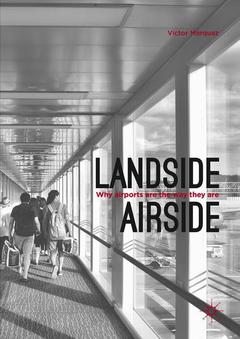Landside | Airside, 1st ed. 2019 Why Airports Are the Way They Are
Auteur : Marquez Victor

Breaks new ground by identifying the Landside–Airside boundary as the single most important feature that shapes an airport
Distinctive for using a Science and Technology Studies’ toolbox as a way to understand the airport’s historical and technological change
Offers fascinating insights, first-hand encounters and privileged access to primary sources.
Written in an engaging manner, providing anecdote, irony, political position, critique and humor, adding to the readability of the text
Organized in a clear chronological sequence, helping the reader to situate and span between the very basic concepts of airfields at the turn of the 20th Century, to the super complex airports of today
Date de parution : 02-2019
Ouvrage de 286 p.
14.8x21 cm
